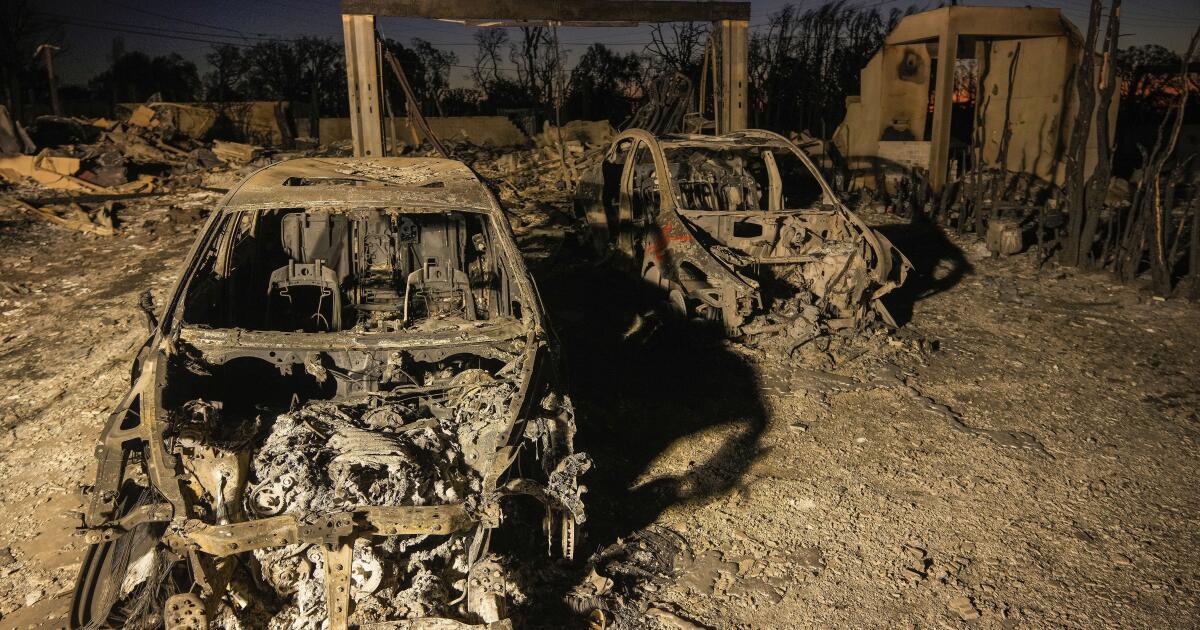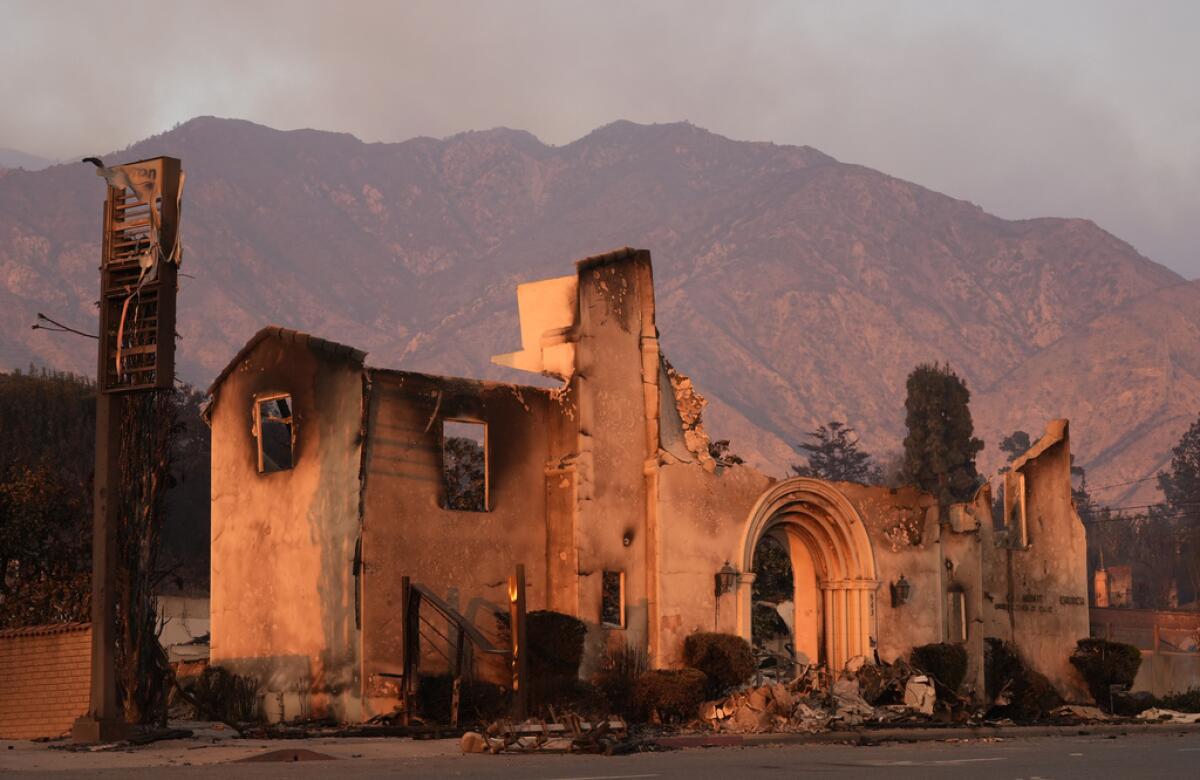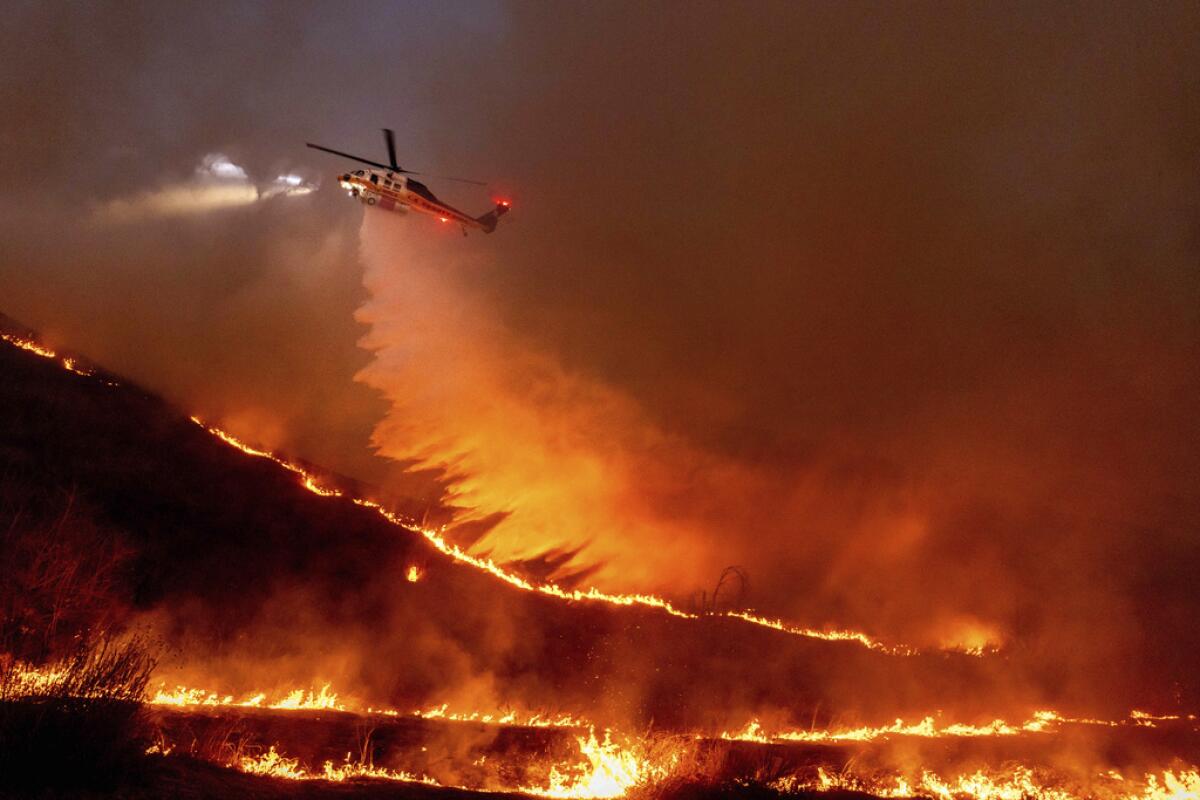Residents affected by Los Angeles area fires won’t be returning home anytime soon

LOS ANGELES — It’s been more than a week since two massive fires forced tens of thousands of people to flee their homes in the Los Angeles area, and authorities said Thursday that residents won’t be returning home anytime soon. As the search for human remains continues in razed neighborhoods, properties also face new dangers, with scorched hillsides at risk of landslides and charred debris laden with asbestos and other toxins.
More than 80,000 people remain under evacuation orders, and many do not know what, if anything, remains of their homes, apartments and possessions. Dozens of people have gathered at checkpoints to plead with police and soldiers restricting access to their neighborhoods to let them in.
Officials said they understand their frustration, but asked residents for patience as hazardous materials teams and cadaver dogs search the sites block by block. They indicated it will take a week or more before people can return.
“Properties have been damaged beyond belief,” Los Angeles County Public Works Director Mark Pestrella said at a briefing. “They are full of sediment, debris, silt and hazardous materials.”

This file image shows the Altadena Community Church a day after it was destroyed by the Eaton Fire on January 9, 2025, in Altadena, California.
(Chris Pizzello/AP)
Hillsides have become unstable behind some damaged homes, and a small landslide in the Pacific Palisades neighborhood this week sent debris onto the streets, he added.
As firefighters still battle the two largest fires, which have left 27 dead and more than 12,000 structures destroyed, thousands of bereaved families and devastated business owners are beginning to contemplate another monumental task: rebuilding what was lost.
The magnitude of the work will be enormous, since the area burned by the fires is three times the size of Manhattan. It is one of the most destructive natural disasters in Southern California history.
Recognizing the health risks in burned areas, the county on Thursday banned any cleanup or removal of fire debris until government officials complete a hazardous materials inspection.
The city is also working to ensure the region’s storm drain system doesn’t become clogged when it starts to rain again in the coming weeks. The rain also creates the risk of mudslides.
The fires occurred at a difficult time, with the city immersed in a post-COVID-19 pandemic transition that has reordered work life and left many downtown buildings with high vacancy rates.
Plus, the 2028 Olympics are being planned, and the region faces what could be the nation’s worst homelessness crisis, which had been Los Angeles Mayor Karen Bass’s priority before the fires. They broke out last week.
The government has not yet released damage estimates, but private companies expect them to run into the tens of billions of dollars. It could become the costliest fire disaster in U.S. history.
Alex Rosewood and almost her entire family in Altadena, northeast of Los Angeles, lost their homes: her father — with whom she and her husband lived — and her aunt, uncle and cousin next door.
A lifetime of memories were lost: Grandma Rosewood’s card game and her unfinished quilt. Your wedding photos. Memories of his grandfather, who was in the Navy. These are all things he wished he could have saved in his frantic escape, as smoke turned the sky gray and his cousin’s house began to burn.
But Altadena is still his home.
“We all plan to rebuild, for sure,” he said.
There will also be inevitable questions about whether it is wise to continue rebuilding in areas known to be high risk, especially in an era of climate change.

A helicopter drops water on the Kenneth Fire in the West Hills section of Los Angeles, Thursday, Jan. 9, 2025.
(Ethan Swope/AP)
What will the new neighborhoods be like? Will fire resistant materials and designs be used? Are more roads, and wider ones, needed to allow faster evacuations and easier access for fire trucks during future fires?
“It’s going to be a while before we can go in there and build something,” observed Michael Hricak, an associate professor of architecture at the University of Southern California, referring to the dangerous chemicals and debris left behind by the fire.
As for new construction, “it’s not about being stronger than Mother Nature. “It’s about being somewhat respectful of Mother Nature and knowing what the challenges are.”
”Are we simply creating another problem for the future?” Hricak questioned.
The Northern California community of Paradise — where the state’s deadliest fire left 85 dead in 2018 — offers a glimpse of how meticulous and difficult recovery and rebuilding can be.
That fire destroyed about 11,000 homes, approximately 90% of the community’s structures. Some 3,200 houses and apartments have been rebuilt.
The town, which previously had 26,000 residents, has had to deal with high construction costs, expensive insurance premiums and uncertainty about how much money those who lost homes will receive from Pacific Gas & Electric, a gas and electric company who declared himself responsible for causing the tragedy.
In Los Angeles — a city known for its dense layers of red tape — Bass issued an executive order this week to make it easier for residents to rebuild quickly.
The federal government has already approved $100 million to remove paint, cleaning products, asbestos, batteries and other household waste from the rubble before crews can begin removing the rubble. Robert Fenton Jr., regional administrator for the Federal Emergency Management Agency (FEMA), said the plan is an initial step toward getting people home.
Elsewhere, the agency is providing support to help people with short-term accommodation.
Michele Baron and her daughter were among those who went to a recovery center in West Los Angeles to find out how to get new birth certificates and Social Security cards.
Baron lost almost everything when his Pacific Palisades apartment, where he had lived for 21 years, burned to the ground. Her daughter returned to the property and rescued a ring and pottery she had made as a child.
Despite the trauma, the plan is to stay.
“Now that I can go anywhere, in a way I don’t want to,” he said.





